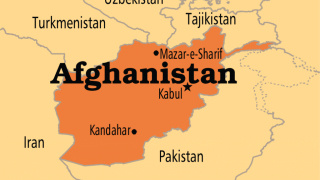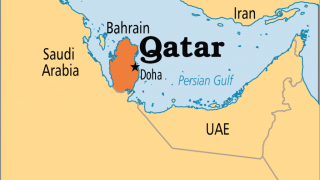21st-Century Geopolitics Of The Caribbean. Part III
24.07.2017
The third chapter of the research will take a look at the regional integration organizations operating in the Caribbean, after which the final part of the article series will conclude with a forward-looking proposal for how the failed pre-independence West Indies Federation could realistically be recreated under the ‘right’ political circumstances.
Beginning with the broadest organizations that the Caribbean is a part of and incrementally proceeding to the smallest, the most relevant regional integration groups are:
The Organization of American States (OAS)
Dominated by the US and its liberal economic interests, the OAS serves as Washington’s primary institutional vehicle for Latin American control and incorporates all of the Western Hemisphere with the notable exceptions of French Guinea, Cuba, and nowadays Venezuela. The first territory was never included in the OAS because of its de-facto colonial status and the fact that it’s “legally” an extension of metropolitan France, while the status of Cuba has always been determined by the US’ lingering Cold War-era policies.
Although the organization voted to lift Cuba’s suspension in 2009, the island nation refrained from rejoining the OAS due to its historical track record of supporting imperialism. It was similarly for this reason that Venezuela announced its decision in early 2017 to leave the OAS following heavy institutional pressure on its government to yield to the demands of pro-American right wing urban militants/terrorists.
As is pertinent to the present research, the OAS counts all of the Caribbean nations as its members except for Cuba and Venezuela. This shouldn’t be surprising, either, since the Caribbean island states have always been under heavy American influence. In addition, they’re much too weak and small to confidently exercise any significantly independent foreign policy, though this doesn’t mean that none of them have any flexibility in their decision making. To the contrary, it’ll soon be revealed how quite a few of these states are interestingly aligned with Venezuela to varying capacities, although there are certain limitations to just how close the US will “allow” them to become before it begins to exercise differing degrees of pushback against them.
Community of Latin American and Caribbean States (CELAC)
A tiny but important step back in scope from the OAS, CELAC is hemispheric-wide but crucially excludes the US and Canada (as well as the European colonies in the region). The point behind its 2010 creation was to establish a functional workaround to the OAS which avoids the US’ organizational dominance, and the conclusion was naturally reached that the only way to do this would be to prohibit the US from joining the new proposed initiative. Seeing as how Canada traditionally acts as the US’ regional lackey, it too was denied entrance into the group, which also helped to centralize its Latin American identity.
CELAC should be seen in hindsight as one of the defining legacies of the so-called “Pink Tide”, a promising period of time when leftist-socialist governments were sweeping the region after a long overdue democratic awakening. Unfortunately, this presented the US with multiple threats to its historic strategic dominance of the region, and what the author previously termed “Operation Condor 2.0” in his earlier book-length analytical series about the “21st-Century Geopolitics of South America” was implemented with ruthless efficacy in reversing many of the political gains from that era. Nevertheless, CELAC survived as one of the most enduring and symbolic outcomes from that time.
Given CELAC’s scope, it should go without saying that it includes all of the Caribbean nations, which thereby provides them with an alternative platform to the OAS in experimenting with more independently minded regional outreaches. CELAC is overall a very positive contribution to Latin America’s regional integration, but it’s much too broad of a platform for delivering concrete results for the Caribbean, hence the need for more focused organizations.
Association of Caribbean States (ACS)
The ACS is a step forward in the direction of a Caribbean-centric regional integration organization in the Western Hemisphere, though it’s still admittedly broad-based and is more of a platform for interaction between the larger states. The organization includes all of the Caribbean nations, Mexico, Central America, and the four countries of northern South America (Colombia, Venezuela, Guyana, and Suriname), while most of the European colonies are associate members. Although more of a talking club than anything else, it holds the potential to one day become something more, though the practical form that it ultimately takes has yet to materialize.
There’s a chance, though, that the ACS could develop into a mechanism for managing any forthcoming Mexican-Colombian rivalry in the region, such as the scenario forecasted in the author’s “21st-Century Geopolitics of South America” article series in the event that Venezuela’s Chavismo government falls to the pro-American militants. If that development does indeed unfold and Venezuela eventually becomes a de-facto outgrowth of a revived post-modern version of “Gran Colombia”, then it’s certainly possible that the ACS could also transform into an interfacing platform between Mexico City and Bogota as regards their expected Central American rivalry in the period thereafter.
There’s no clear indication for how this could relate to the Caribbean island states, but the wisest and most diplomatically skillful of them could try to play this state of affairs off to their advantage, seeking to reap continued energy benefits from “Gran Colombia” (which might retain Venezuela’s Petrocaribe program but for completely opposite geopolitical reasons than in the present) while attracting real-sector economic ones from Mexico. All in all, the ACS has a lot of potential no matter what the geopolitical future holds, but the group isn’t being properly utilized to promote Caribbean interests, and that needs to change in one way or another in order for it to actualize its full potential.
Caribbean Community (CARICOM)
CARICOM provides an excellent foundation for closer intraregional relations and could conceivably lay the groundwork for the Caribbean to collectively promote its interests to the rest of the world. The organization comprises all of the independent Caribbean island states except for Cuba and the Dominican Republic, which are comparatively better off from an holistic economic perspective than the rest, and also includes the historically-culturally Caribbean states of Guyana and Suriname in South America. Therefore, CARICOM brings together some of the weakest countries in the hemisphere and pools their political-economic resources together in order to boost their combined weight on the world stage and provide a vehicle for closer collaboration between each member.
CARICOM already has a free trade area in place and also signed an Economic Partnership Agreement (EPA) with the EU under the CARIFORUM banner, the latter of which also includes the Dominican Republic. Additionally, on the topic of the Santo Domingo’s inclusion to the EU’s CARIFORUM EPA, this was because the country is part of the Africa, Caribbean, and Pacific Group of States (ACP), which was the technical structure that Brussels signed the agreement with. The ACP, as its name implies, brings together states from its constituent regions, and the relevant Caribbean portion overlaps with CARICOM.
Apart from the economic component, there’s also a military one to CARICOM’s integration, and that’s the US’ “Partnership for Prosperity and Security in the Caribbean”. This essentially makes the organization function as a regional proxy for the US, as Washington holds unparalleled power in it and obviously channels the group towards its own purposes. However, there really aren’t many “opportunities” for the US to apply in pursuit of geopolitical ends, so it pretty much serves the purpose of responding to environmental disasters (hurricanes) and combating illegal drug and migrant smuggling rings. It also functions as a communications channel in coordinating joint action between all parties, which in and of itself is technically an integrational purpose.
What’s significant to note about CARICOM, however, is that it was formed as a less official but geographically expanded successor of sorts to the failed pre-independence West Indies Federation.
Whereas the said polity didn’t include the Caribbean-linked South American states of Guyana and Suriname, CARICOM does, and this importantly sets the precedent for their close Trinidadian ally to pivotally link these mainland countries with their island counterparts in the future, as will be described in the final chapter. It’s also instructive that Trinidad, its West Indies Federation rival Jamaica, Guyana, and Suriname are CARICOM’s four founding members, since it proves that these seemingly disparate states all shared the same integrational vision for decades despite having lost the political will to take it any further in the formal sense.
ALBA and Petrocaribe
The late-Venezuelan President Hugo Chavez’s lifelong mission was to spread his socialist model throughout the hemisphere in order to improve the living conditions of Latin America’s majority-impoverished population. To that noble end, he formed the Bolivarian Alliance (formerly Alternative) for the Peoples of our Americas, or ALBA, which eventually grew to incorporate 11 members. The most prominent of these are Venezuela, Cuba, Nicaragua, Ecuador, and Bolivia, but there are also a handful of smaller Caribbean island states as well. In fact, all of the independent countries of the Lesser Antilles aside from the “Atlantic Exceptions” of Barbados and Trinidad are part of ALBA.
Somewhat related to ALBA is the Petrocaribe network of states which receive heavily subsidized energy from Venezuela. This group is a lot larger but less political than ALBA and importantly includes 11/15 CARICOM members, with Barbados and Trinidad once again being the notable exceptions alongside the Bahamas and the British colony of Montserrat.
Connecting ALBA and Petrocaribe, it’s clear to see that Venezuela has managed to exert prominent influence over many of the Caribbean states, though the extent of its tangible success is debatable.
On the one hand, Venezuela’s “energy dependents” (for lack of a better description) in Petrocaribe naturally support it in international fora such as the OAS, while that mostly seems to be the full level of their commitment for most.
Of course, the comparatively larger and openly multipolar countries of Cuba, Nicaragua, Ecuador, and Bolivia contribute a lot more to Venezuela’s regional security and political connections than the smaller Caribbean island states, though the question then becomes whether or not the latter category of Caracas’ partners are simply using it for cheap energy and nothing more. Venezuela’s government, believing wholeheartedly in the Bolivarian Revolution carried out by Chavez, might be somewhat ideologically ‘blind’ to the transactional nature of its relationship with CARICOM’s ALBA and Petrocaribe members, preferring instead to imagine a deeper political partnership where none might actually exist.
This isn’t to argue against the Caribbean countries’ membership in the ALBA and Petrocaribe initiatives, but just to point out what might be the very inconvenient fact that Venezuela cannot depend on all of its nominal energy-ideological partners in the region for substantial levels of genuine political support. Seeing as how ALBA is much more ideologically driven than Petrocaribe is, any regime change in Venezuela would probably end up doing away with the former though retaining the latter, albeit for unipolar ends instead of multipolar ones. Bearing in mind that CARICOM’s Petrocaribe members are ideologically unreliable partners of Caracas and concerned much more with practical transactional benefits than ideological solidarity, they’ll probably retain their partnership with a neoliberal pro-Western energy-exporting Venezuela without a second thought.
As regards the Caribbean members of Venezuela’s two regional integrational organizations (not counting Cuba in this context), the main thing that they’re concerned about is that Caracas continues its energy subsidies. If a pro-American government comes to power, there’s a chance that this program might end on the basis that it’s economically disadvantageous for Venezuela to keep supporting it while its own citizens are living in much direr poverty due to the consequences of the US’ Hybrid war on their country. Should this decision be made, then it would cynically play to Washington’s own advantages in providing it with a “level playing field” to swiftly move in and replace Venezuela’s energy supplier role to these states. Moreover, it could also create space for Trinidad to do so as well with its proposed Eastern Caribbean Gas Pipeline.
Organization of Eastern Caribbean States (OECS)
This local-regional integration organization has the tightest collaboration between its members out of all of the previously analyzed ones, and this is because of its realistic scope and the shared across-the-board similarities between its members. The OECS brings together 6/8 of the independent states in the Lesser Antilles plus a few European colonies, or in other words, all of the sovereign countries in this island chain apart from the “Atlantic Exceptions” of Barbados and Trinidad. Each of the independent OECS members use the East Caribbean Dollar and are part of the same Central Bank, underscoring their impressive level of financial integration.
Moreover, most of them are also involved in the same military organization, the US-backed “Regional Security System” (RSS). Actually, as regards the latter bloc, the European colonies are excluded whereas Barbados is included. The RSS is more of a fine-tuned version of the earlier-described “Partnership for Prosperity and Security in the Caribbean” and accordingly handles the same security tasks such as responding to environmental catastrophes (hurricanes) and their attendant humanitarian consequences, and as well as breaking up illegal drug and migrant smuggling schemes. In addition, the RSS was also employed by the US to lend the Pentagon regional “credibility” for its 1983 invasion of Grenada. Altogether, it can be argued that the OECS is a successor organization of sorts to the West Indies Federation because of the inclusion of so many of the latter’s one-time members.
The primary difference between the OECS and the West Indies Federation is that Barbados, Jamaica, and Trinidad aren’t member of the pseudo-successor organization, nor are the existing British colonies of the Cayman Islands and Turks & Caicos Islands. Another disparity between the two regional organizations is that the OECS has managed to integrate its members in many spheres whereas the West Indies Federation was ultimately unsuccessful in this. Part of the reason behind their separate fates can probably be attributed to their respective memberships, as it can be argued that the West Indies Federation was simply “too big” and brought together rival power centers (Jamaica and Trinidad) which couldn’t overlook their differences in the name of organizational unity.
As it stands, the OECS could prospectively proceed with its integrational plans by one day taking them to their logical conclusion and becoming a political federation, but that won’t lead to much substantial geopolitical change in the Caribbean. The island states forming this bloc are trying to simultaneously reap benefits from both the US and Venezuela, as is evidenced by their membership in the RSS military organization that Washington leads as well as the ALBA and Petrocaribe groups that Caracas founded. If pressured to choose, they’d expectedly side with the US in any actual military conflict owing to their institutional loyalties (not that their participation would make any pivotal difference), but due to their energy dependency on Venezuela, they openly support it in international organizations such as the OAS.
Therefore, a federalized OECS could on the one hand be used as solidify the US’ control over the Caribbean even more than it already is, though it could also potentially become a component (however tiny) of the emerging Multipolar World Order in the Western Hemisphere. In either case, however, the OECS is much too small to become a power center in its own right, which is why any reconstitution of the West Indies Federation would have to include other larger members in order to exert any noticeable geopolitical sway, though this expectedly comes with the same rivalry implications which tore apart the erstwhile West Indies Federation. There’s a chance that this organizational pitfall could be avoided, but that’s largely dependent on the outcome of the Hybrid War on Venezuela and the consequences that it has on the Caribbean.












